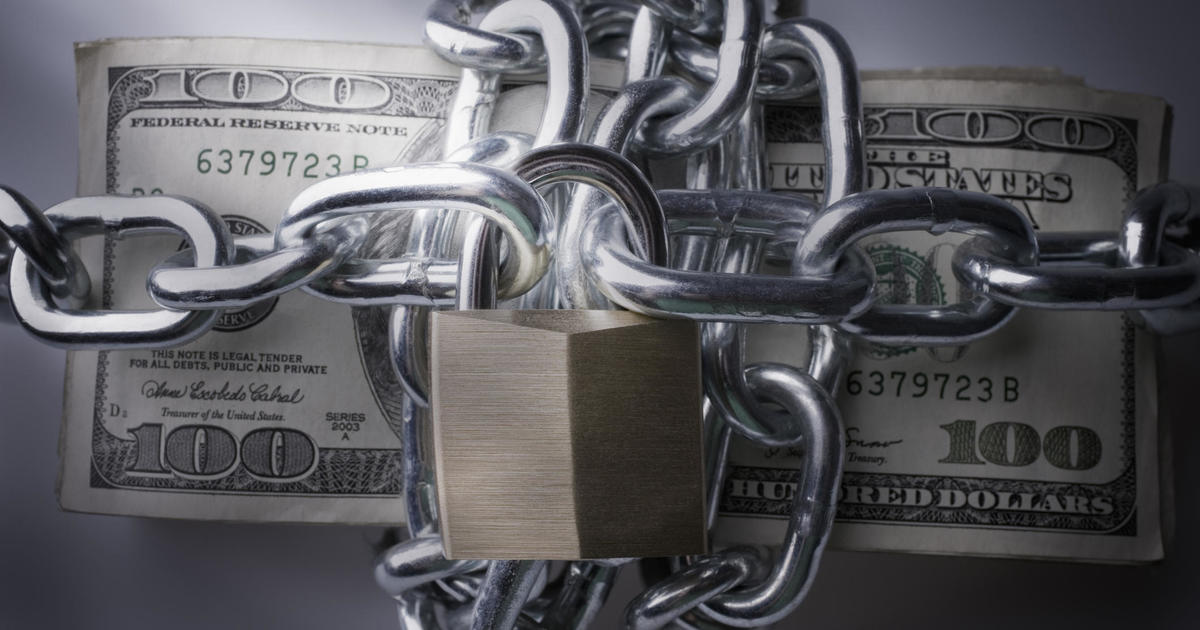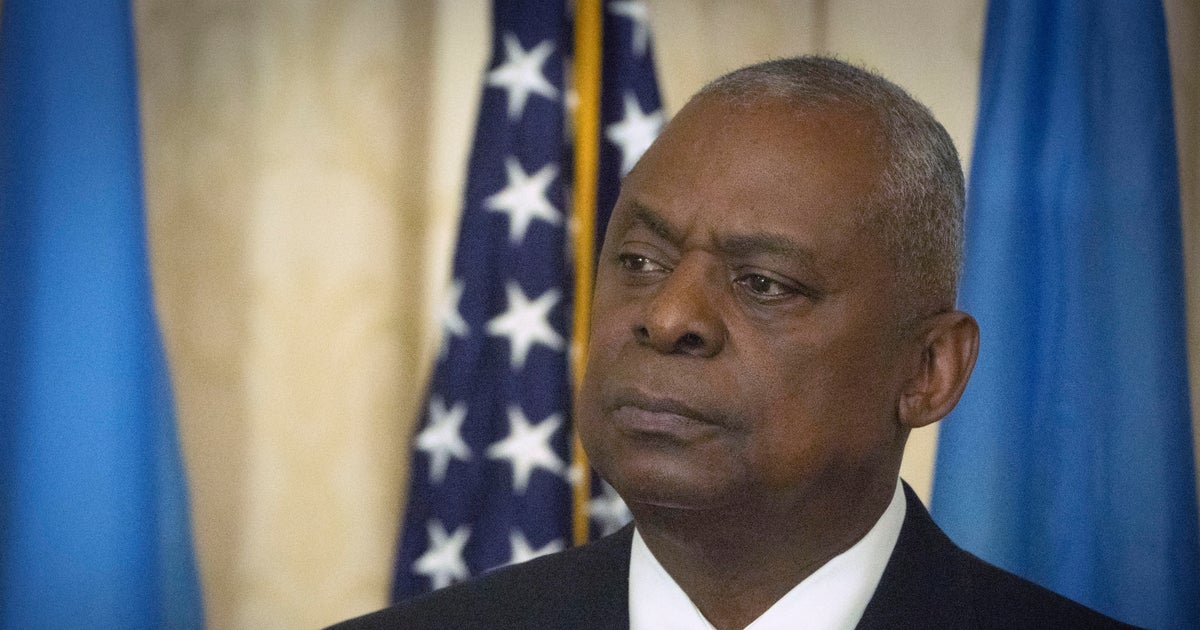CBS News
How to earn 5% or more on your savings without locking your money up

REB Images
Interest rates are high right now. And, you are likely well aware of the issue if you’ve been house shopping or have opened a credit card statement recently.
However, today’s high rates aren’t just affecting lending products. They’re also impacting the rates offered on deposit accounts, too, like certificates of deposit (CDs).
These accounts give you a way to tap into today’s high rates — but you typically have to agree to lock your money up for the full CD term to take advantage of them. So, is there any way to earn competitive interest — let’s say 5% or more — without locking your cash up in a CD?
Access meaningful returns with a high-yield savings account.
How to earn 5% or more on your savings without locking your money up
One of the best ways to earn 5% on your money without agreeing to leave it untouched for a CD term that is months- or years-long is to open a high-yield savings account. These accounts are similar to traditional savings accounts in that they offer a safe and accessible place to store your money. The difference between the two is the interest rates that are offered.
According to the FDIC, the average rate offered on a regular savings account is currently 0.46%. So, money put into the average savings account is losing buying power now that the current inflation rate is at 3.1%.
The good news is that leading high-yield savings accounts offer a significantly higher return, with rates on some of the best high-yield savings accounts that can be 10 times higher or more compared to regular accounts. And, you don’t have to lock your money away for months or years to access these rates.
But there’s a caveat. High-yield savings accounts come with variable interest rates so if the overall rate environment declines, the rate on your high-yield account will probably drop in tandem.
Earn a compelling return with a high-yield savings account today.
Benefits of opening a high-yield savings account
There are several benefits to opening a high-yield savings account. Some of the most important are:
High returns
“One of the key advantages lies in the ability to earn a more competitive interest rate compared to traditional savings accounts,” says Dutch Mendenhell, author of the book, Money Shackles: The Breakout Guide to Alternative Investing. “This becomes particularly significant in a low-interest-rate environment, offering individuals a means to optimize returns.”
Some of the best high-yield savings accounts currently offer interest rates from 4.35% to 5.25% or more. That can result in impressive returns for an account with virtually no risk.
For example, if your high-yield account had a rate of 4.35% and a balance of $20,000, and you were to leave the money untouched for a year, you would earn a total of $870 in interest — with a total ending balance of $20,870.
Or, if you were to earn a rate of 5.25% on the same balance for a year, your interest earnings would climb to $1,050 by the end of the year — leaving you with a total balance of $21,050.
Liquidity
The biggest advantage a high-yield savings account has over a CD is liquidity.
“A high-yield savings account will allow you to withdraw that money when you need it,” says Douglas Feldman, chief investment officer at Stash. “A CD comes with a fixed interest rate for a set term (usually between six months and six years) which defeats the purpose of having it for urgent emergencies. If you withdraw your money from the CD before the term is over, you’ll generally lose some of the interest you’ve earned or you may face a withdrawal penalty.”
Liquidity is what makes a high-yield savings account a smart choice for your emergency savings. This type of account has the potential to generate a meaningful return while giving you access to your money when you need it.
Safety
High-yield savings accounts are generally safe. That’s because they usually come with either FDIC or NCUA insurance on balances up to $250,000. That insurance allows you to recoup your losses if the financial institution you bank with goes out of business or otherwise fails to meet its obligations.
Accessibility
“These accounts typically have no monthly fees or minimum balance requirements, making them accessible to a wide range of people,” says Justin Stivers, financial advisor and founding attorney at Stivers Law.
So, whether you have $100 or $100,000 in savings, you can typically find a high-yield savings account that meets your needs with few or no fees.
Compare leading options and take advantage of the benefits of high-yield savings accounts now.
The bottom line
Today’s CDs allow you to earn 5% or more on your money, but if you don’t want to lock your cash up, it may not be your best option. A high-yield savings account could be the alternative you’re looking for. While these accounts have variable interest rates, they also come with high rates right now and make it easy to tap into your cash when you need to.
CBS News
“Citizen” Bill Clinton – CBS News

Watch CBS News
Be the first to know
Get browser notifications for breaking news, live events, and exclusive reporting.
CBS News
Almanac: November 17 – CBS News

Watch CBS News
Be the first to know
Get browser notifications for breaking news, live events, and exclusive reporting.
CBS News
U.S. Marines, Japanese and Australian troops will train together amid heightened concerns over China

U.S. Marines will take part in joint training with Japanese and Australian forces in northern Australia, the three countries’ defense ministers announced Sunday as they expressed concern about a spate of confrontations with China’s increasingly assertive military.
Australia’s acting Prime Minister Richard Marles hosted U.S. Defense Secretary Lloyd Austin and Japanese Defense Minister Nakatani Gen for talks in Darwin, Australia.
The trilateral amphibious training between Australia, Japan and the U.S. Marine rotational force in northern Australia will begin in 2025 with Exercise Talisman Sabre. Australia will also join Exercise Orient Shield in Japan for the first time next year.
“Recognizing the critical role the trilateral partnership plays to uphold regional stability, we commit to trilateral policy coordination and to consult each other on regional security issues and contingencies,” they said in a joint statement.
In their statement, the three defense ministers reiterated “serious concern” about destabilizing actions in the East and South China seas including “dangerous conduct” by the Chinese military against Philippine and other vessels from the region. China claims the South China Sea almost in its entirety.
“We reiterate our strong opposition to any unilateral attempts to change the status quo by force or coercion,” they said, adding that it is “important that all states are free to exercise rights and freedoms consistent with international law.”
The ministers also urged the importance of peace and stability across the Taiwan Strait. China claims self-ruled Taiwan as its own territory and has stepped up military harassment with frequent drills around the island.
Marles, who is also Australia’s defense minister, said following talks with his Japanese counterpart in September that both nations looked to ways to build greater familiarity between their forces. One of the “obvious opportunities” was for Japan to participate in activities during the U.S. Marine rotation in Australia, he said Sunday.
“Having a more forward-leaning opportunity for greater training with Japan and the U.S. together is a really fantastic opportunity,” he said.
Asked if the increased military cooperation would anger Beijing, Marles said the decision was about building “the best relationships possible with like-minded countries, with our friends and with our allies.”



